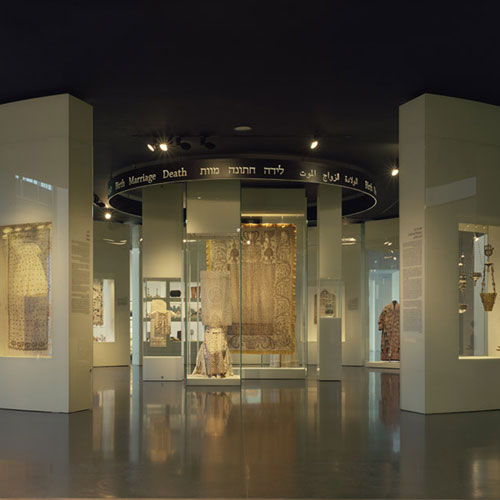
Most Likely
Designers, Archaeologists, and Mysterious Objects
-
June 7 2024 - February 4 2025
Curators: Nurith Goshen and Oded Friedland
Designer: Tal Gur
-
Bella and Harry Wexner Gallery
Most Likely displays ten archaeological mysteries: objects that archaeologists do not yet know what they were used for, and that designers will try to decipher.
Archaeologists investigate the past by revealing, documenting, and analyzing buildings, objects, materials, and forms. Each new discovery updates their knowledge and has the potential to change their view of history. There is an inherent gap between the archaeological facts and the interpretations of these facts; between what exists and is known – such as the characteristics of the object and the context in which it was found – and what is unknown – the function of the object and its meaning in early societies. Archaeologists’ doubts and the possibility that a different interpretation may emerge in the future are what stand behind the frequent use of the expression “most likely.”
In order to get as near as possible to the truth, archaeologists often call upon experts from other disciplines. The innovative appeal to the field of design adds a new tool to the archaeologists’ toolkit. Unlike researchers who typically employ an analytical way of thinking, designers use a free, unbounded mode of thinking that moves in different and even contradictory directions.
By harnessing design thinking for the benefit of archaeological research and employing an interdisciplinary approach, the exhibition seeks to re-examine the story of objects thousands of years old and perhaps even reveal their secrets. Will it succeed?
This initiative was developed in the context of the Master’s Degree Program in Industrial Design, the Bezalel Academy of Arts and Design, Jerusalem, under the directorship of Prof. Chanan de Lange
Participating archaeologists: Dr. Eran Arie, Prof. Yuval Goren, Nurith Goshen, Dr. Ruth Jackson-Tal, Dr. Catherine Commenge, Ahiad Ovadia, Dr. Nava Panitz-Cohen, Prof. Naama Yahalom-Mack
Participating designers: Boaz Bar-Adon, Dorit Bar-Adon, and Yael Raz; Oded Friedland; Prof. Dov Ganchrow; Inbal Hoffman and Avigail Talmor; Studio Laniado-Keret: Shira Keret and Itay Laniado; Ron Livay; Luka Or; Reddish-Naama Steinbock and Idan Friedman; Shir Senior; Roni Yeheskel and David Shatz
- May 01
- May 01
- Apr 26May 02May 03May 09May 10May 16May 17May 23May 24May 30May 31
- May 03May 10May 17May 24May 31
- Apr 21Apr 24Apr 28May 05May 08May 12May 15May 19May 22May 26May 29
- Apr 21Apr 28May 05May 12May 19May 26
- Apr 21Apr 24Apr 28May 05May 08May 12May 15May 19May 22May 26May 29
- Apr 22May 06
- May 06May 27
- May 06
- May 06
- May 06Jun 10
- May 08May 15May 15May 22May 29
- May 08May 15May 22May 29
- May 08May 15May 22May 29
- May 08
- Apr 24May 08May 15May 22May 29



























